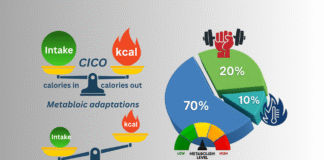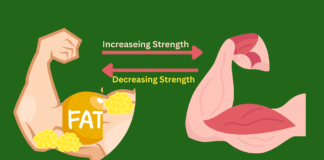Distribution of Body Fat
Body fat is mainly distributed into two main regions: subcutaneous and visceral. Subcutaneous fat is found under the skin, while visceral fat (10–20% of total fat mass) surrounds internal organs. Subcutaneous fat is mostly accumulated in the gluteal, femoral and abdominal regions and its distribution ratio is determined by different physiological and hormonal factors.
What is Spot Reduction?
It is believed that the accumulation of fat in a particular area of the body is greatly influenced by the nature of working, such as working in a sitting position using only the upper part of the body for hours. Spot reduction refers to fat reduction from a selective body area, which is achieved by adapting specific exercises of the muscles of the same targeted area.
Spot reduction is still debated
Is fat burn systematic?
Those who think that spot reduction could help them reduce belly fat and thus improve body image might get disappointed if they go through scientific literature declaring that “fat loss is systemic.” It means that exercise helps extract and burn fat from all over the body and releases it into the blood as fatty acids for energy, it does not preferably burn the fat near exercising muscles.
In a randomized clinical trial of 12 weeks, no significant reduction in belly fat was observed in people who participated in an abdominal resistance program in combination of diet changes compared to the diet-only group. Further, a meta-analysis of 13 studies comprising 1100 participants, conducted in 2021, also revealed that localized muscle exercise did not affect targeted fat deposits. In the second meta-analysis, involving 13 studies and 1158 participants, among 37 comparisons, 17 favoured greater reduction of fat at the trained limb, while 20 favoured the untrained limb.
Is fat burn selective?
In contrast to the above research studies, some studies provided evidence of spot reduction.
In a recent study conducted in 2023, sixteen overweight males adapted abdominal endurance exercise combined with treadmill running for 10 weeks at a rate of 4 days/week. The control group performed only treadmill running. Trunk fat mass decreased more in the abdominal endurance exercise group than in the control group, confirming that endurance exercise of the abdominal body increased utilization of adipose tissue near the working muscles. Also, the study based on spot reduction by a traditional resistance training protocol, conducted in 2021, showed a significant reduction in subcutaneous fat, affirming that the training could be an effective way to reduce localized abdominal fat deposits.
Initially, the spot reduction was just explained solely on the assumption that the deposition of fat in a particular body area is related to the activity of the adjacent muscles. However, the recent literature associates spot reduction with blood flow. According to their explanation, lipolysis, or fat breakdown, is associated with an increase in blood flow and, thus, to the oxygenation of the fat cells. Since blood flow and lipolysis are generally higher in subcutaneous adipose tissue adjacent to contracting muscles than adjacent to resting, fat oxidation is promoted in contracting muscles. Thus spot reduction training work by increasing blood flow in the targeted areas.
Conclusion
Exercise in combination of an appropriate diet is important whether fat burn is systematic or selective. Even if it is systematic, fat will be reduced from the targeted area too, but it requires regular exercise.
For Further Reading
- Abdominal aerobic endurance exercise reveals spot reduction exists: A randomized controlled trial
- A proposed model to test the hypothesis of exercise-induced localized fat reduction (spot reduction), including a systematic review with meta-analysis
- Effect of an Endurance and Strength Mixed Circuit Training on Regional Fat Thickness: The Quest for the “Spot Reduction”




